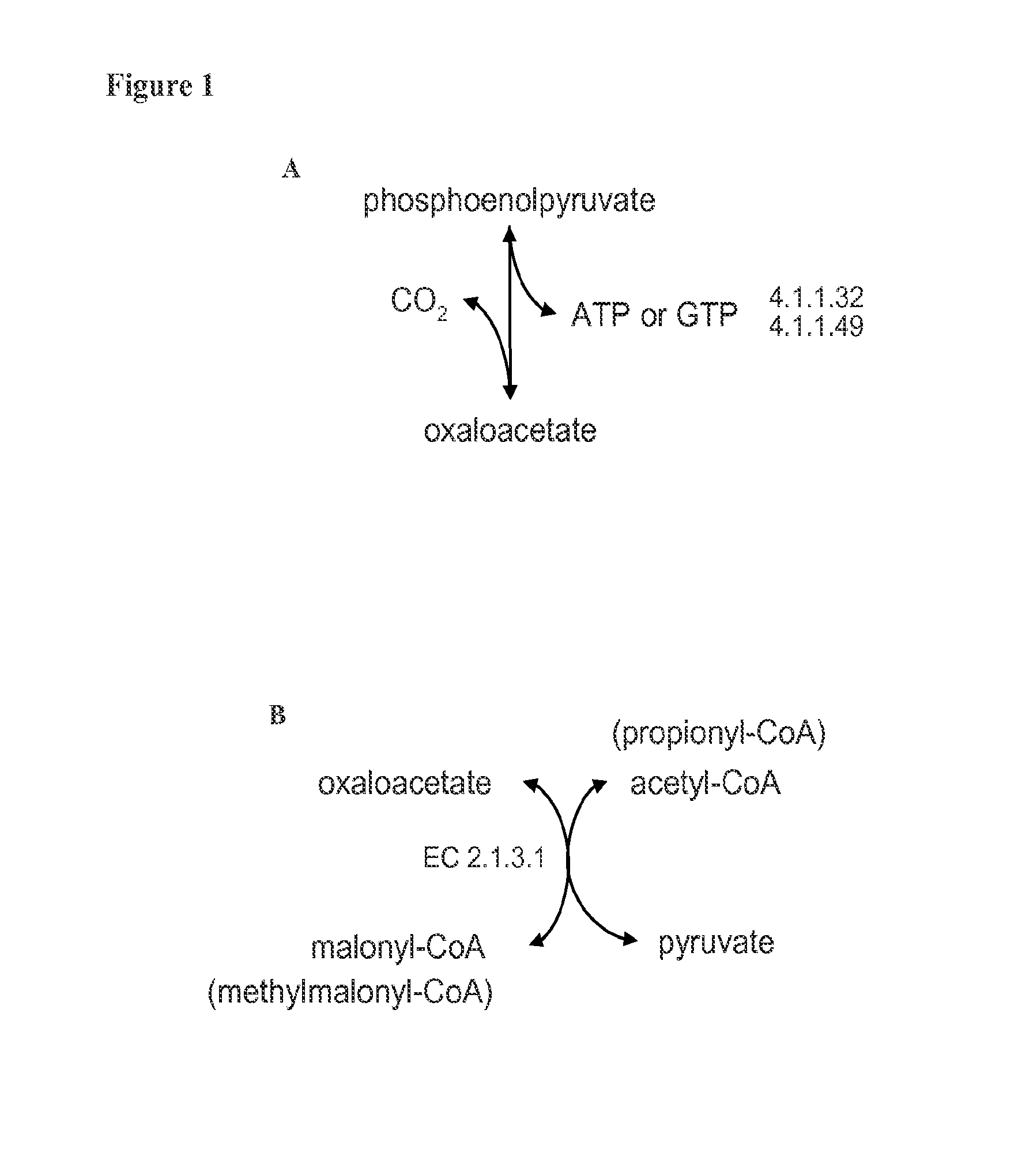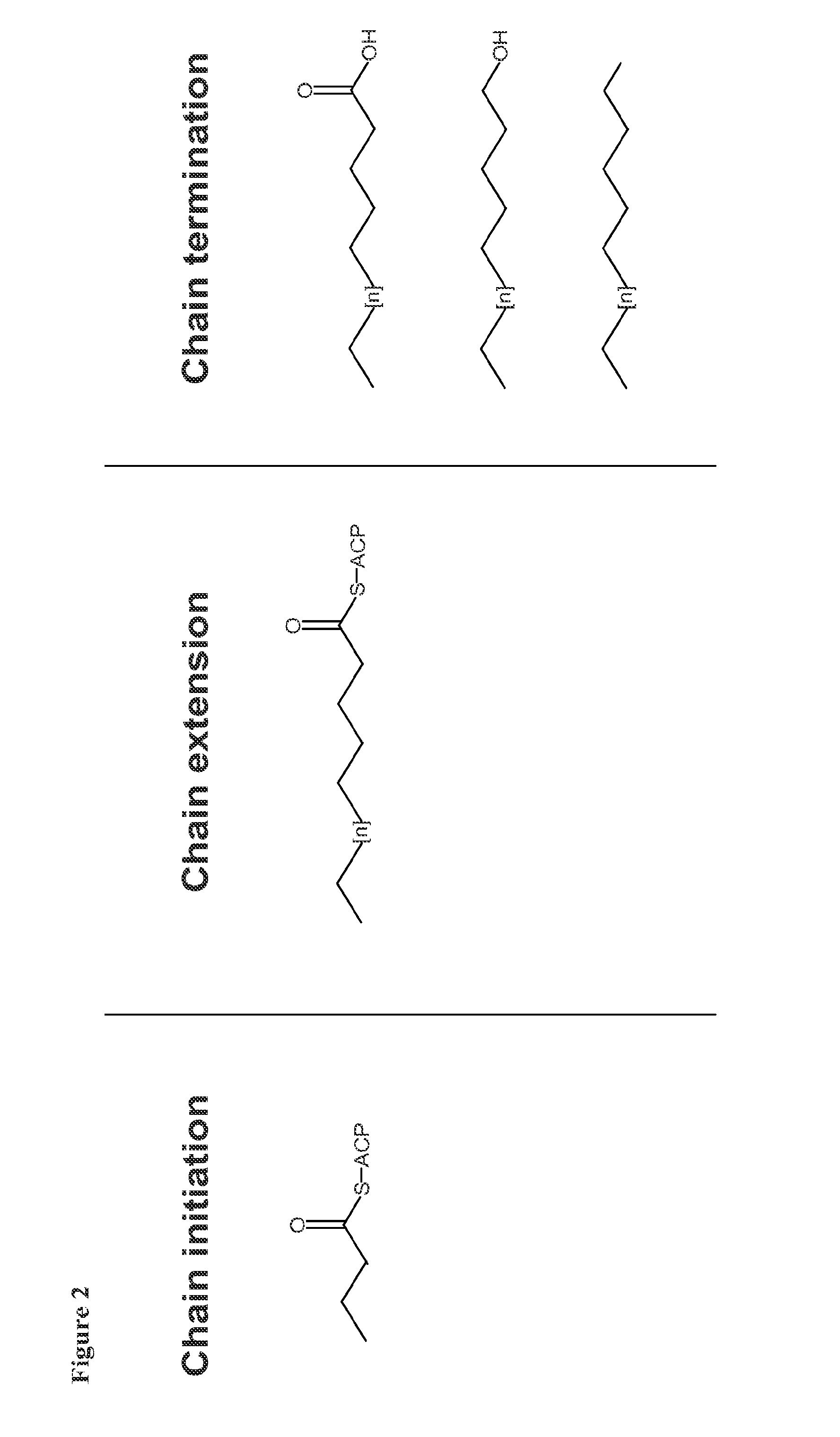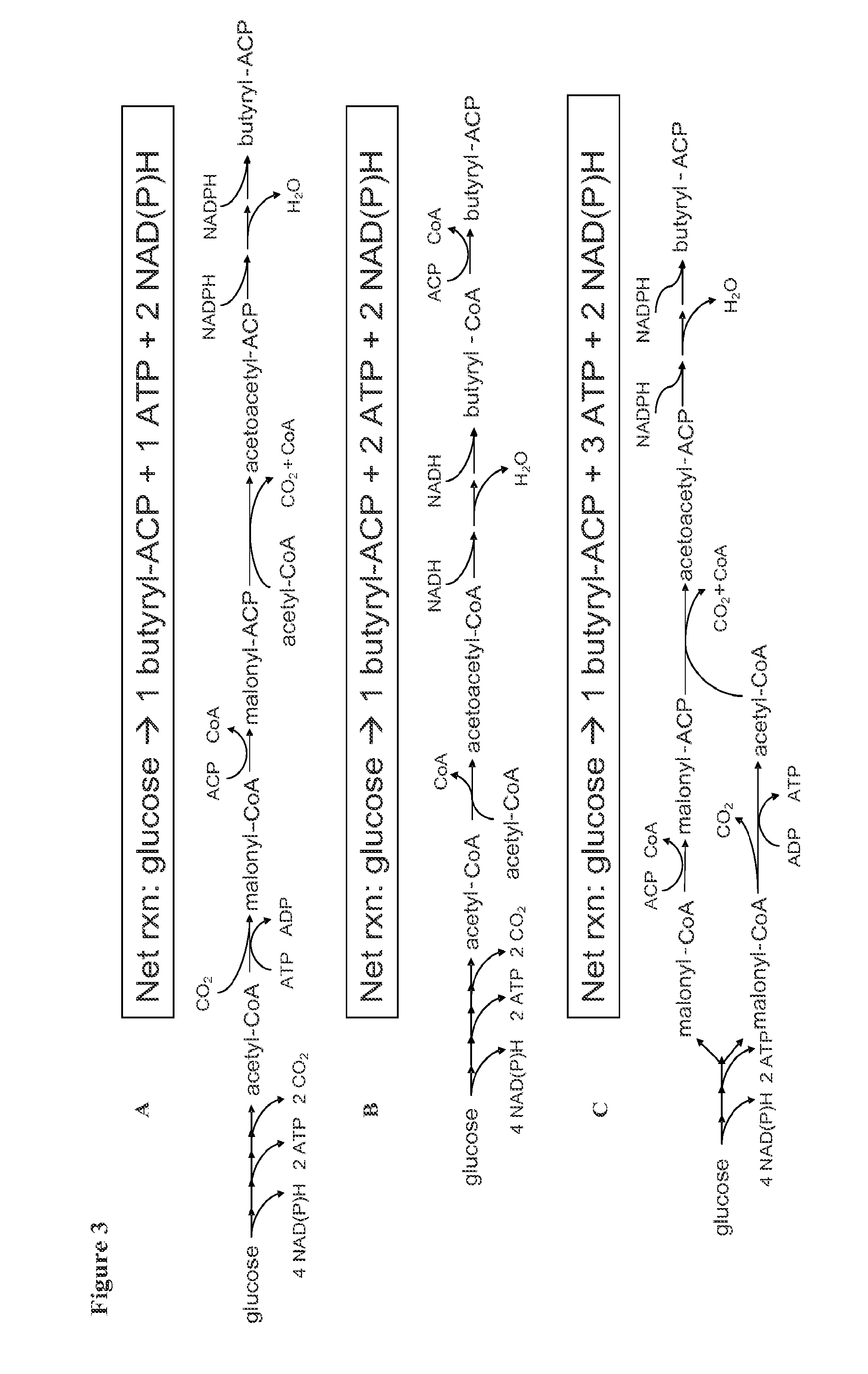Production of Malonyl-CoA Derived Products Via Anaerobic Pathways
a malonylcoa and anaerobic technology, applied in the direction of lysine, enzymology, instruments, etc., can solve the problem of high unattractive requirement for oxygen transfer in suspended solid medium, and achieve the effect of reducing the volume of fermentors, reducing product toxicity, and reducing capital costs
- Summary
- Abstract
- Description
- Claims
- Application Information
AI Technical Summary
Benefits of technology
Problems solved by technology
Method used
Image
Examples
example 1
[0210]The present prophetic example describes the engineering of a recombinant microorganism to convert a native fatty acid biosynthetic pathway into a fermentative pathway, i.e., one that generates net positive ATP and is redox neutral during anaerobic growth.
1.1 Production of Hexadecanol in T. saccharolyticum
[0211]Gene overexpression and gene deletion followed by evolutionary engineering will be performed to create a strain producing 1-hexadecanol.
[0212]The strain T. saccharolyticum JW / SL-YS485 has an established transformation system based on a natural competence protocol. See Shaw et al., Applied and Environmental Microbiology 76:4713-4719 (2010). Recombinant DNA, either linear or plasmid based, can be introduced with the following protocol.
[0213]1.1.1 T. saccharolyticum Transformation Protocol
[0214]Prior to use, petri dishes, 50 mL and 15 mL conical falcon tubes, and pipet tips are all placed in the anaerobic chamber at least overnight. Transformations are performed in an anae...
example 2
2.1 Diverting Central Metabolic Flux Through Oxaloacetate in E. coli
[0234]This example describes engineering the central metabolic flux in Escherichia coli so that the majority of glycolytic flux passes from phosphoenolpyruvate to oxaloacetate rather than from phosphoenolpyruvate to pyruvate. See FIG. 9. This is accomplished via a series of gene deletions that inactivate competing pathways and gene overexpressions that activate desired pathways. Target genes are shown in Table 4. A set of minimal target gene deletions is shown in Table 5.
TABLE 4Targets for Gene Inactivationgene namedescriptionlocus tagaedd6-phosphogluconate dehydrataseb1851ldhAlactate dehydrogenaseb1380ptaphosphate acetyltransferaseb2297adhEacetaldehyde dehydrogenase / alcoholb1241dehydrogenasefrdABCDfumarate reductase (anaerobic)b4151-b4154fdhFformate dehydrogenase-Hb4079ppcphosphoenolpyruvate carboxylaseb3956pykApyruvate kinaseb1854pykFpyruvate kinaseb1676mdhmalate dehydrogenaseb3236maeAmalic enzyme NADHb1479maeBma...
example 3
3.1 Methodology to Screen for Transcarboxylase Activity
[0250]To confirm that putative transcarboxylase genes have in vivo oxaloacetate:acetyl-CoA carboxytransferase activity, an E. coli strain was constructed that requires recombinant production of malonyl-CoA for growth. Wildtype E. coli produces malonyl-CoA, a metabolite essential for growth, exclusively via the enzyme acetyl-CoA carboxylase (ACC). ACC is composed of the four subunit genes accA, accB, accC, and accD, which are located at three different loci on the E. coli genome.
[0251]Because malonyl-CoA is essential, ACC cannot be disrupted directly in wildtype E. coli without resulting in a lethal phenotype. To overcome this, a conditional pathway for malonyl-CoA biosynthesis was first introduced into wildtype E. coli. This pathway, encoded by matBC from Rhizobacterium trifolii, transports exogenous malonate across the cell membrane, and then uses malonate, ATP, and CoA to produce malonyl-CoA, AMP, and PPi. See An and Kim, Eur....
PUM
| Property | Measurement | Unit |
|---|---|---|
| Volume | aaaaa | aaaaa |
| Volume | aaaaa | aaaaa |
| Volume | aaaaa | aaaaa |
Abstract
Description
Claims
Application Information
 Login to View More
Login to View More - R&D
- Intellectual Property
- Life Sciences
- Materials
- Tech Scout
- Unparalleled Data Quality
- Higher Quality Content
- 60% Fewer Hallucinations
Browse by: Latest US Patents, China's latest patents, Technical Efficacy Thesaurus, Application Domain, Technology Topic, Popular Technical Reports.
© 2025 PatSnap. All rights reserved.Legal|Privacy policy|Modern Slavery Act Transparency Statement|Sitemap|About US| Contact US: help@patsnap.com



